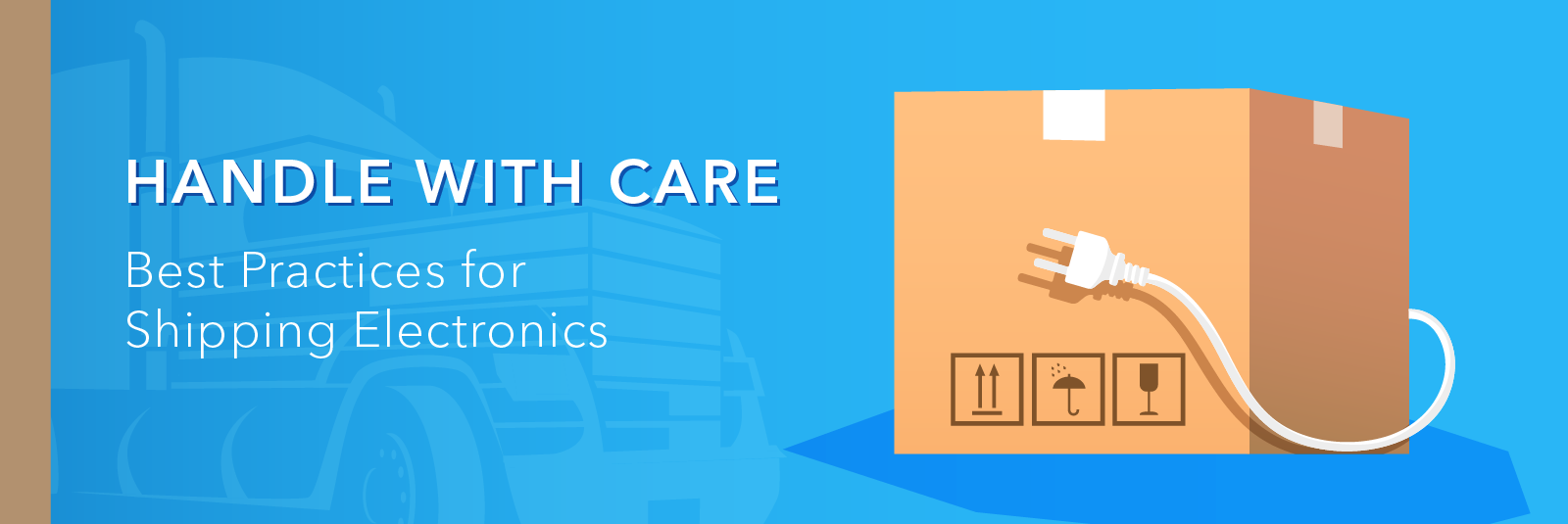For those in the shipping industry, the world is getting smaller. The growing demand to ship cargo cross-country and globally means that more products are traveling greater distances. This is especially true of electronics. According to the Consumer Technology Association, U.S. consumer electronics sales is expected to reach a record $351B in 2018. With so much at stake, it’s critical for shippers and 3PLs to protect their fragile electronic cargo. Here are best practices for ensuring your electronics are properly packed for shipment:
- Box Up Boxes
The most secure way to ship electronics is to package the original box within a larger box, like a Russian nesting doll. Line the outer box with packing materials to cushion the inner box if it’s jostled around. The smaller box of electronics should be centered within the larger box, leaving 1-3 inches of space between the two boxes. You’ll fill that empty space with additional cushioning (see the next bullet point). By using boxes within boxes, you create layers of protection and any rough handling will be absorbed by the outer container.
- Add Cushioning
Probably the most important part of shipping electronics safely is adding cushion. Fill those few inches of space between your inner and outer boxes to the brim with packaging materials that will act like pillows around your delicate electronics and protect them from shock and vibrations.
Your budget, the type and size of the electronic products, and the mode of transportation (air, land, or ocean) will help you determine the type of packaging materials to use. You will likely use a combination of several of these:
- Styrofoam peanuts
- Starch peanuts (biodegradable, but dissolve in water)
- Air pillows
- Bubble wrap
- Polyurethane and shape-conforming foam
Don’t go chintzy on the cushioning — if you use too little, you run a high risk of damaging your electronics as all shipments suffer a fair number of bumps and bruises.
- Pack Smaller Parts Separately
To protect smaller components of electronic devices, package them separately when possible. For example, coil cables or power cords and bind them with zip ties; remove ink cartridges and put them in bubble wrap; and put tiny plastic parts in separate, small bags. Label the smaller packages accordingly to keep the shipment organized.
- Ground Static Electricity
Static electricity can fry sensitive electronic equipment like motherboards and CPUs, so it’s important to prevent any build-up when packing shipments. You can pack electronics in anti-static bags or even wear an electrostatic discharge wrist strap to help ground the static electricity. These preventative measures will protect your shipments from static discharge capable of damaging or even killing electronics.
- Seal Containers
This may be obvious, but be sure to seal your containers securely. Use strong tape for cardboard, nails for wooden boxes, padlocks for metal containers, etc. All openings should be sealed up tight for shipping.
The volume of electronics being shipped on a daily basis requires the use of reliable packing techniques to ensure each piece is secure. Using these best practices, sensitive cargo will arrive safely at its destination.
